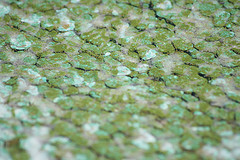- 1 read

Researchers at the University of Texas at Austin in April unveiled a bacterium that produces cellulose and glucose that can be turned into ethanol and other biofuels. If production can be ramped up, the bacteria’s byproducts can be used in transportation as a substitute for oil and gas.
Drs. R. Malcolm Brown Jr. and David Nobles Jr. recently published their findings in the journal Cellulose. The simple sugars produced by the cyanobacteria they researched, such as glucose and sucrose, are the necessary components in the production of ethanol.
Cyanobacteria is also known as blue-green algae. The microbe used by Brown and Nobles was created by giving algae a set of cellulose-making genes from a non-photosynthetic bacterium, Acetobacter xylinum, known as a prolific cellulose producer.
Cheap Production
The microbe could serve as a very inexpensive source for sugars to make biofuels, said Nobles, a research associate in the Section of Molecular Genetics and Microbiology. Both Brown, Johnson & Johnson Centennial Chair in Plant Cell Biology, and Nobles believe their cyanobacteria can be grown in non-agricultural lands using salty water unsuitable for human consumption or crops.
The cyanobacteria use sunlight as an energy source to make and excrete sugars and cellulose. The researchers say that glucose, cellulose and sucrose can be continually harvested without harming or destroying the cyanobacteria, unlike the harvesting process used with true algae or crops that requires killing the organism and using alterations to extract the sugars. Cellulose harvested from plants is difficult to break down as the cellulose is crystalline and contains lignins, the molecular compounds that make plants firm and crunchy. The methods needed to extract cellulose is what makes the process with plants so costly, they explained.
The cyanobacteria studied by Brown and Nobles produces large amounts of glucose and sucrose that can be directly harvested from the organisms. They also say that cyanobacteria that have the ability to fix atmospheric nitrogen can be grown without petroleum-based fertilizer input. They predict that they could produce the same amount of ethanol with their cyanobacteria using half the land area required to grow corn for ethanol production.
However, a high level of productivity using cyanobacteria is some time away, they concede. Brown and Nobles are currently studying the best methods to scale up cost-effective production of bacteria and have two patents pending. Other sources for ethanol production being considered in the United States are switchgrass and wood for cellulose, corn for glucose and sugarcane for sucrose.

